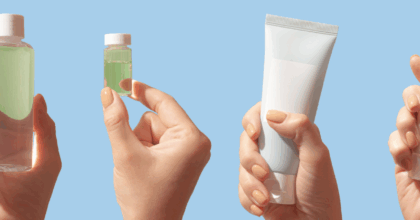Haircare ingredients that are about to start trending
As consumers become more aware of the ingredients they eat, drink or use for beauty purposes, interest in natural and food-based ingredients is rising. Using natural food ingredients that are rich in antioxidants can be positioned to help protect hair and lessen pollution damage concerns. As food and antioxidant-rich ingredients cross into beauty and personal care, look for the following haircare trends that are starting to emerge.
Build on healthy eating perceptions
The link between food and beauty has a long history. Recently, formulating haircare with food ingredients will appeal to those looking for more natural, often organic-certified beauty products.
Younger consumers are demanding more transparency on what’s in BPC products, and many of these same consumers also link what they eat to their appearance. Brands should strengthen this perception by highlighting the use of trending food ingredients that are linked to better hair and skin, and championing their specific benefits. Vitamin and mineral claims relating to hair maintenance will also hold a certain appeal.
Use botanical/herbal extracts in anti-pollution haircare
Anti-pollution has been a growing theme in BPC for a number of years, and haircare has followed in the trend footsteps of skincare; touting protective and restorative products to deal with the stresses of everyday life. Skincare and haircare brands are now creating anti-pollution products that help remove and repel pollutants more effectively.

While the exact ingredients used for this purpose vary, antioxidant-rich botanicals are the most common, perhaps because it is easier to communicate a better understanding of these to consumers. Moringa is a purifying extract that is commonly used to remove pollutants and counteract free radical damage caused by pollution. The Indian Lotus Flower, which is known for its ability to resist dust and humidity is often used to create a barrier on the hair, locking out both city grime and frizz-inducing humidity.
Brands should look to other natural ingredients that have similar potential as an anti-pollution extract to help tell the botanical/herbal story. One place to aid the anti-pollution narrative is the Kakadu plum, which is native to Australia. It is also known as the richest source of vitamin C, and is often used in skincare and pharmaceuticals because of its antioxidant and antiseptic properties.
Jump on the turmeric bandwagon
Turmeric is another trending food ingredient that can help cleanse the scalp and hair of toxins caused by pollution exposure and its antibiotic properties make it a natural exfoliator.
Brands can use turmeric hair products to soothe the scalp, moisturize and remove dead cells regularly to protect the skin layers. It will remove unwanted material from the skin, so it can help regulate scalp condition by treating excessively dry or oily skin.
Turmeric can also be used to help prevent hair loss, as it keeps the scalp healthier and helps to prevent hair fall thanks to its active chemical curcumin.
Use natural/food remedies for a daily hair detox

Brands can also look to other trending foods to apply the pollution detox effect. Pink salt, which has become popular on dining tables around the world, could be a useful scalp exfoliator to help combat dandruff, while also giving hair texture and absorbing excess oil.

Andrew is a Global Haircare Analyst at Mintel, analyzing the haircare market, identifying and tracking the latest trends and product innovations.
-
The Future of Haircare, Styling & ColourDiscover the latest global trends in the haircare industry, including the behaviours, preferences and habits of the consumer...Explore this research
-
 2026 Global PredictionsOur Predictions go beyond traditional trend analysis. Download to get the predictive intelligence and strategic framework to shape the future of your industry in 2026 and beyond. ...Download now
2026 Global PredictionsOur Predictions go beyond traditional trend analysis. Download to get the predictive intelligence and strategic framework to shape the future of your industry in 2026 and beyond. ...Download now -
Are you after more tailored solutions to help drive Consumer Demand, Market Expansion or Innovation Strategy?Ask for a customised strategic solution from Mintel Consulting today....Find out more































